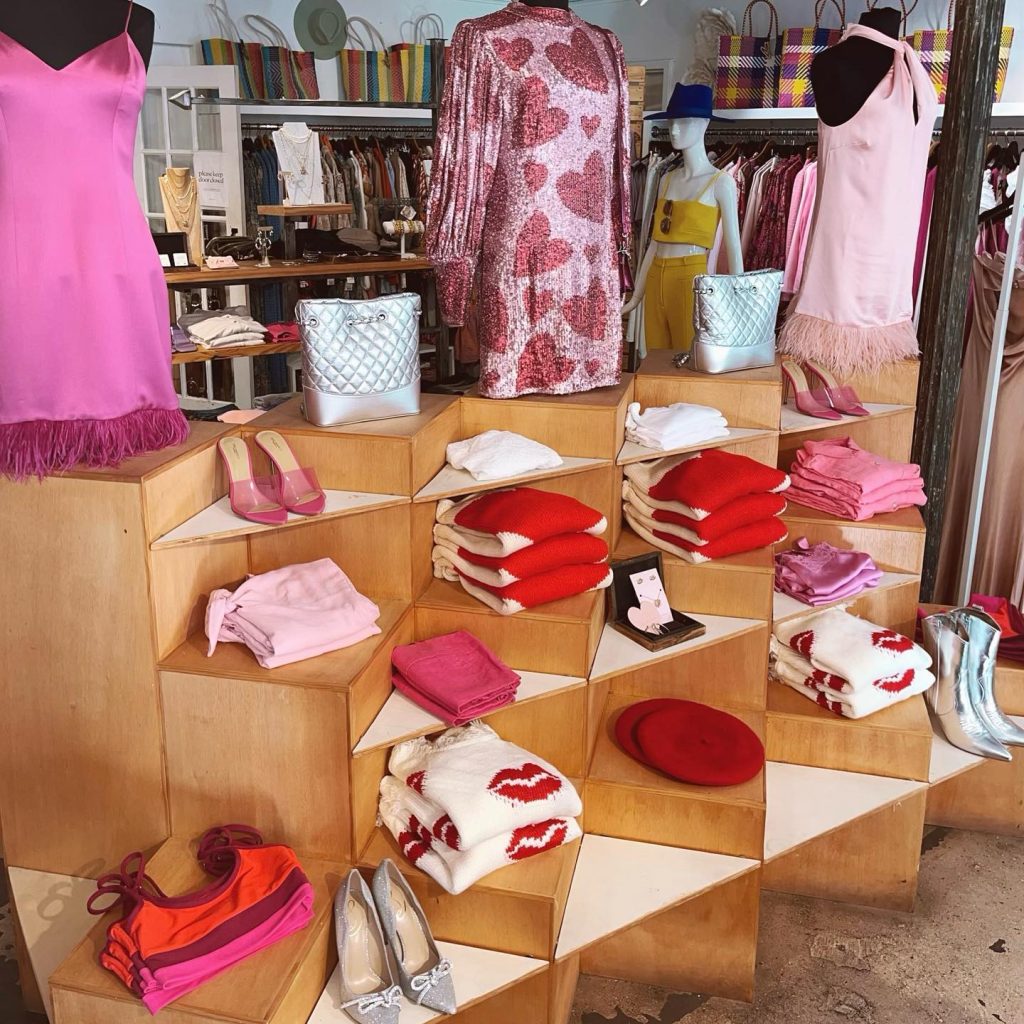A Newbie's Overview to Browsing the Boutique Fashion Scene
A Newbie's Overview to Browsing the Boutique Fashion Scene
Blog Article
Lasting Fashion: Just How Eco-Friendly Garments Is Forming the Future of Design
As the fashion sector deals with raising scrutiny over its ecological influence, the rise of sustainable style supplies an encouraging alternative that lines up design with eco-friendly obligation. boutique fashion. How does this movement really influence the future trajectory of style, and what difficulties lie in advance in its extensive fostering?
Cutting-edge Sustainable Materials
As the style market grapples with its environmental effect, innovative sustainable materials have arised as a crucial remedy for minimizing ecological impacts. These materials not only reduce reliance on fossil gas but also decrease dangerous pesticide usage and water intake.
Along with plant-based materials, developments in biofabrication have caused the development of lab-grown textiles. Mycelium natural leather, derived from mushroom roots, provides a versatile and eco-friendly option to pet leather. Its manufacturing leads to significantly lower carbon emissions and water usage, making it an extra lasting option for style designers looking for to line up with green methods.
Recycled materials are also acquiring grip, with polyester made from recycled plastic bottles standing for a significant advancement. This advancement not just diverts plastic waste from garbage dumps and oceans yet likewise decreases power consumption compared to generating virgin polyester. Together, these products underscore the potential for a much more lasting garment industry, leading the way for eco mindful style and production.
Eco-Conscious Production
Structure on the advancements in lasting materials, the apparel industry is also re-evaluating its manufacturing processes to additionally reduce environmental impact. Key strategies consist of lessening water usage, decreasing carbon discharges, and removing hazardous chemicals. By taking on closed-loop systems, suppliers aim to reuse water and power effectively, significantly decreasing waste. The assimilation of renewable resource sources, such as solar and wind power, into manufacturing facilities further cuts dependence on nonrenewable fuel sources.
Another important facet is the reduction of harmful chemicals commonly utilized in coloring and completing textiles. Eco-conscious makers are changing towards plant-based dyes and waterless dyeing technologies, which not only safeguard neighborhood communities yet also enhance worker safety. Developments like electronic printing minimize material waste and power intake, offering a cleaner alternative to conventional approaches.
Furthermore, openness and traceability have actually become extremely important. With the development of blockchain innovation, business can now supply detailed understandings right into their supply chains, making sure ethical and ecologically friendly practices at each step. This transparency develops consumer trust fund and motivates brands to preserve high sustainability standards. As the need for eco-conscious products grows, producers are compelled to innovate, making certain that the future of fashion is both sustainable and elegant.
The Rise of Upcycling
Upcycling, a transformative practice in lasting fashion, includes creatively repurposing disposed of materials into new, premium products. This innovative technique not just minimizes waste but additionally diminishes the demand for resources, thereby minimizing the environmental influence of clothing production. By rebuilding and reimagining existing things, designers and fashion brands have the ability to infuse originality into their collections while promoting environmental responsibility.

In addition, the upcycling activity has encouraged small companies and independent designers, who frequently lead in advancement because of their dexterity and imagination. By profiting from the abundant accessibility of extra products, these entities add to a round economy, demonstrating that style can be both trendy and lasting. Via upcycling, the industry takes considerable strides in the direction of a much more internet liable and mindful future.
Thrift Society's Impact
The expanding thrift culture substantially reshapes the landscape of sustainable fashion, stressing the value of mindful intake. This cultural change urges customers to accept used apparel, consequently decreasing the need for new garment production and lessening environmental impact. Thrift buying not only prolongs the lifecycle of clothes yet also decreases the carbon footprint related to production, moving, and throwing away garments.
A crucial element of thrift society is its democratization of fashion. By supplying a wide array description of styles from different ages at budget friendly prices, second hand shops make fashion obtainable to a wider target market. This accessibility promotes a feeling of uniqueness and creative thinking, as consumers mix and match one-of-a-kind pieces to curate personalized wardrobes without adding to the rapid style cycle.
Additionally, thrift culture promotes circularity in style, lining up with the principles of a circular economic climate. As even more consumers and designers embrace second hand society, the fashion market is forced to adjust, integrating sustainable practices to fulfill the growing demand for eco-conscious alternatives.

Future Trends in Fashion
Fashion's evolution is progressively shaped by sustainability-driven initiatives and technological developments. One prominent fad is the increase of electronic style, where online garments can be worn in enhanced truth settings, dramatically minimizing fabric waste.
Furthermore, the combination of blockchain innovation provides brand-new possibilities in openness and traceability, permitting customers to validate the sustainability credentials of their apparel. boutique fashion. This makes certain accountability in supply chains and promotes ethical sourcing techniques. 3D printing is yet one more innovation that guarantees to change manufacturing processes by making it possible for on-demand manufacturing, consequently lowering excess inventory and waste
As these technologies develop, they are positioned to change the fashion landscape, combining style with sustainability. The future of style, as a result, lies in a smooth mix of modern technology, technology, and eco-friendly obligation.
Conclusion
The change of the fashion market via sustainable techniques shows a critical change towards ecological responsibility. This evolution not just aligns fashion with eco-friendly sustainability however additionally establishes a criterion for future fads concentrated on duty and innovation.
As the style industry deals with enhancing analysis over its environmental impact, the rise of lasting style provides an appealing option that straightens design with environmental responsibility.As the style industry grapples find more information with its ecological impact, ingenious sustainable products have emerged as a critical option for minimizing eco-friendly impacts. With each other, these products underscore the capacity for a more lasting fashion sector, leading the means for environmentally mindful design and manufacturing.
Building on the technologies in sustainable products, the style market is likewise re-evaluating its manufacturing processes to additionally lower ecological influence. boutique fashion.Upcycling, a transformative practice in lasting style, entails artistically repurposing discarded materials right into new, high-grade products
Report this page